UPSC Daily Current Affairs: 30 August 2024 | Current Affairs & Hindu Analysis: Daily, Weekly & Monthly PDF Download
GS3/Economy
Finternet
Source: Business Today

Why in News?
Recently, the ex-chairman of UIDAI described the idea of ‘Finternet’ at the Global Fintech Fest (GFF) in Mumbai.
About Finternet:
- Finternet represents a network of interconnected financial ecosystems, similar to the internet.
- This concept aims to reduce the barriers between various financial services and systems.
- It seeks to simplify complex clearing, messaging chains, and other frictions that currently impede the financial system.
Working:
- Finternet would operate on unified ledgers, integrating multiple financial markets.
- These markets include tokenized assets, stocks, bonds, and real estate, consolidated onto a single programmable platform.
- The system enables individuals and businesses to transfer any financial asset, regardless of amount, at any time, using any device, to anyone, anywhere globally.
- Transactions are designed to be inexpensive, secure, and nearly instantaneous.
Advantages:
- The approach is user-centric and unified, encompassing all asset types with a universal infrastructure.
- Finternet aims to streamline and enhance the efficiency of financial transactions.
Significance:
- This system intends to minimize the complexities involved in current transaction processes, which are often slow and costly.
- Central banks would play a crucial role in maintaining trust in the financial system while collaborating closely with commercial banks.
GS3/Environment
Land-Based Deep Depression causing extreme floods in Gujarat
Source: DTE
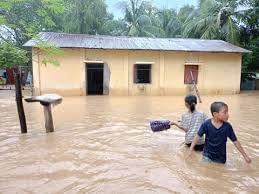
Why in news?
Gujarat and parts of Rajasthan are experiencing severe flooding due to a land-based deep depression. This unusual weather event was exacerbated by moisture influx from both the Bay of Bengal and the Arabian Sea.
What is a Land-Based Deep Depression?
- A land-based deep depression is a cyclonic system marked by a notable drop in atmospheric pressure.
- It leads to sustained winds and significant weather impacts.
- These depressions form and strengthen over land, which is relatively uncommon due to the scarcity of moisture compared to oceanic environments.
Characteristics:
- Forms over land rather than over water.
- Wind speeds range from 51 to 62 km/h, just below the threshold for a tropical cyclone (62-88 km/h).
- Depends on moisture from surrounding soil rather than from ocean sources.
- Often has unpredictable paths and can result in heavy rainfall and localized flooding.
Implications of Land-Based Deep Depressions
- These systems can cause prolonged and intense rainfall, leading to significant flooding, particularly in areas unaccustomed to such weather patterns.
- Heavy rains can result in substantial soil erosion, adversely affecting agricultural productivity and changing landscapes.
- Extended flooding can lead to waterlogging in agricultural fields, causing soil salinization and a decrease in fertility.
GS3/Environment
Key Facts about Sabina Shoal
Source: News Week
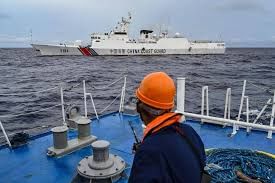
Why in News?
China's natural resource ministry has recently published its inaugural survey report regarding the Sabina Shoal, a contested area in the South China Sea.
About Sabina Shoal:
- Also referred to as Xianbin Reef, Sabina Shoal is an oceanic coral atoll that has formed atop a seamount.
- It is situated in the eastern region of the Spratly Islands.
- The shoal is approximately 75 nautical miles away from the Philippine province of Palawan.
- According to the 1982 United Nations Convention on the Law of the Sea, Sabina Shoal is regarded as part of the Philippines' 200-nautical mile Exclusive Economic Zone (EEZ).
- Conversely, China asserts sovereignty over the shoal and a significant portion of the South China Sea, maintaining a consistent presence in the area.
- Geographically, it is located about 630 nautical miles from the coast of China.
- Sabina Shoal extends nearly 23 km along a northwest-southeast axis.
- It consists of two primary sections that are linked by a narrow area.
- The larger western section measures 13 km in length and 6 km in width, while the eastern section is smaller, measuring 10 km by 3 km.
- Both sections contain a central lagoon encircled by a coral ring, characterized by discontinuous shallow areas.
GS3/Economy
Unified Payments Interface (UPI) block mechanism
Source: The Hindu

Why in news?
Recently, the Securities and Exchange Board of India (SEBI) has proposed a mandatory Unified Payments Interface (UPI) block mechanism for secondary market trading. This facility will allow clients to utilize the UPI-based block mechanism while trading.
Overview of the UPI Block Mechanism
- The UPI block mechanism functions similarly to the Application Supported by Blocked Amount (ASBA) facility.
- ASBA allows investors to trade with amounts that are blocked until the allotment is finalized.
- In the primary market, this ensures that an investor's money is only transferred once the allotment is confirmed.
- The UPI block mechanism enables clients to engage in secondary market trading using funds that are blocked in their bank accounts, rather than transferring the funds to the trading member beforehand.
- Currently, this facility is optional for investors and is not yet mandatory for Trading Members (TMs) to provide as a service.
Significance of the UPI Block Mechanism
- This mechanism offers enhanced protection for clients' funds and securities during trading activities.
Key Facts about Application Supported by Blocked Amount (ASBA)
- ASBA was first introduced by SEBI in 2008.
- It is primarily used for making Initial Public Offerings (IPOs) or subscribing to rights issues.
- This facility allows investors to apply for an IPO or rights issue by blocking the application amount in their bank account instead of transferring it to the issuer.
- Under the ASBA process, the investor's application money remains in their account, with only a block placed on the funds designated for the IPO application.
- The blocked funds stay in the investor's account until the allotment process is concluded.
- Once shares are allotted, the block is lifted, and only the amount corresponding to the allocated shares is deducted from the investor's account.
- For public issues and rights issues, all investors are required to apply through the ASBA mechanism.
GS2/Polity
Controversy Over Lateral Entry into the Civil Services
Source: The Hindu
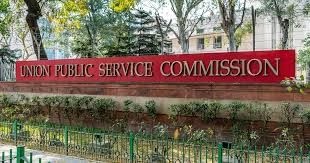
Why in news?
Recently, the Union Public Service Commission (UPSC) retracted an advertisement for the lateral recruitment of 45 government positions. This decision arose due to objections from political parties and intervention from the Prime Minister's Office (PMO), which raised concerns regarding the need for reservation in such recruitments.
Understanding Merit vs. Spoils System:
- Merit System: Introduced in 1858, this system guarantees that appointments to government positions are made through a stringent selection process. In India, the UPSC oversees exams to select officers for the Indian Administrative Service (IAS), Indian Police Service (IPS), and other central services. The goal is to establish a neutral bureaucracy capable of providing independent advice to the government.
- Spoils System: Originating in the U.S., this system allows the ruling party to appoint its supporters to various government roles. Although largely supplanted by the merit system after 1883, it still persists in a limited capacity, with a small fraction of senior government positions filled directly by the President.
About Lateral Entry in Civil Services:
- Lateral entry refers to the recruitment of specialists from the private sector into government organizations. This approach was recommended by the NITI Aayog in its Three-Year Action Agenda, and the Group of Secretaries (GoS) in Governance advocated for the inclusion of personnel at middle and senior management levels in the government.
Objective:
- The primary goals of lateral entry are:
- To infuse domain expertise into civil services.
- To mitigate the shortage of IAS officers at the central level.
- Through lateral entry, the government seeks to attract exceptional individuals with expertise in various sectors, including revenue, financial services, economic affairs, agriculture, and civil aviation, among others, to enhance public service delivery.
Process of Lateral Entry Recruitment:
- The recruitment process for lateral entry is managed by the Department of Personnel and Training (DoPT), which requests the UPSC to conduct the selection process for various positions in government departments.
- The UPSC then invites online applications for these lateral recruitment positions.
- After candidates submit their applications, the UPSC conducts interviews for shortlisted candidates and recommends selected candidates to the DoPT.
- Finally, the government appoints the recommended candidates, typically for a duration of 3 to 5 years.
Need for Lateral Entry:
- Shortage of Officers: The DoPT reports a shortage of approximately 22.48% or 1,510 officers in the IAS cadre, with the IAS and IPS facing a combined deficit of 2,418 officers.
- Domain Expertise: Lateral entry facilitates the recruitment of domain experts from the private sector into central administration, potentially enhancing efficiency and fostering a competitive environment in governance delivery.
Pros of Lateral Entry in Civil Services:
- Expertise and Specialization: Lateral entry allows professionals with specialized knowledge and experience from the private sector to contribute to policymaking and implementation, thus improving governance quality.
- Innovation and Fresh Perspectives: Individuals from diverse backgrounds can introduce new ideas and innovative approaches, enhancing the effectiveness of public administration.
- Merit-Based Selection: This process emphasizes merit, skills, and experience rather than traditional seniority, thereby fostering a performance-oriented culture in civil services.
- Shortening Learning Curve: Experienced professionals can quickly adapt to their roles without needing extensive training, which is typically required for career bureaucrats.
Cons of Lateral Entry in Civil Services:
- Cultural and Bureaucratic Resistance: The traditional civil services may resist the inclusion of lateral entrants, leading to friction and integration challenges.
- Lack of Public Sector Experience: Lateral entrants may not fully grasp government procedures and protocols, which could hinder their effectiveness.
- Potential for Bias: The selection process for lateral entry might be perceived as biased or politically influenced, raising concerns about transparency and fairness.
- Short-Term Focus: Lateral entrants may prioritize short-term objectives over long-term public service commitments, potentially impacting policy continuity and sustainability.
Way Forward:
- Higher Scrutiny: Appointments at the secretary level should be closely monitored to ensure they positively influence policy decisions.
- Integration with Public Policy: Lateral entrants, even at operational levels, must align with public policy objectives.
- Balancing Merit with Social Justice: Appointments should combine technical competence with considerations for reservation and social justice, as emphasized by political philosopher Michael Sandel.
Larger Issues in Indian Bureaucracy:
- Challenges for Career Bureaucrats: Despite facing criticisms of inefficiency and red-tapism, career bureaucrats work within a complex environment constrained by numerous rules and political pressures.
- Preserving Autonomy: The effectiveness of bureaucrats relies on their autonomy, particularly regarding postings, tenures, and transfers. Strengthening Civil Service Boards at both the Centre and State levels, as recommended by the Supreme Court in the T.S.R. Subramanian case (2013), is essential.
Conclusion:
While lateral entry offers certain advantages, it is crucial to address deeper issues within the Indian bureaucracy. A balanced approach that incorporates both career bureaucrats and lateral entrants, focusing on merit, social justice, and autonomy, is vital.
GS3/Science and Technology
Study reveals intriguing Magnetic behavior on Mars
Source: The Print

Why in news?
A recent study from the Indian Institute of Geomagnetism (IIG) has unveiled notable variations in the strength of Mars' crustal magnetic field, which differs significantly between day and night. This discovery highlights important aspects of Mars' magnetic anomalies.
Notable Facts about Mars:
- Mars is the fourth planet from the Sun and the second smallest in the Solar System, only larger than Mercury.
- Named after the Roman god of war, Mars is often referred to as the "Red Planet" due to its reddish appearance caused by iron oxide on its surface.
- It is classified as a terrestrial planet with a thin atmosphere, featuring surface characteristics such as impact craters, valleys, deserts, and polar ice caps.
- Mars has similar day lengths and seasonal cycles to Earth because of its comparable rotational period and axial tilt.
- It is home to Olympus Mons, the largest volcano and highest mountain in the Solar System, as well as Valles Marineris, one of the largest canyons.
- Recent NASA findings indicated the presence of water frost over Olympus Mons.
- Key Findings on Mars' Magnetic Field:
- The crustal magnetic field of Mars is significantly stronger during the day and nearly absent at night, indicating a diurnal variation in magnetic field strength.
- The magnetic field is primarily concentrated in the southern hemisphere, specifically poleward of 30°S latitude.
- Magnetic fields are unevenly distributed across the Martian surface, scattered within a region between 120°E and 240°E.
- The daytime crustal magnetic field plays a vital role in influencing the ionosphere in Mars' southern hemisphere, impacting future communication and navigation systems.
- Data Utilization from MAVEN Satellite:
- The research utilized data from the MAVEN (Mars Atmosphere and Volatile EvolutioN) Satellite, which has been studying Mars since 2014.
- MAVEN's data on electron density and magnetic fields was crucial for understanding how Mars' crustal magnetic field affects its plasma environment and ionosphere.
- Significance of the Study:
- Understanding the crustal magnetic field of Mars is essential for planning future robotic and manned missions, providing insights into natural magnetic shielding against space radiation.
- The findings can inform strategies to mitigate the effects of space weather on both spacecraft and astronauts during missions to Mars.
Previous Year Question (PYQ):
[2016] The Mangalyaan launched by ISRO is also called the Mars Orbiter Mission.
1. It made India the second country to have a spacecraft orbit Mars after the USA.
2. It was the first successful attempt by India to place its spacecraft in Mars' orbit.
Which of the statements given above is/are correct?
(a) 1 only
(b) 2 and 3 only
(c) 1 and 3 only
(d) 1, 2 and 3
GS2/Governance
What is SHe-Box (Sexual Harassment e-box) Portal?
Source: Nagaland Post

Why in News?
The Union Ministry of Women and Child Development has recently launched the SHe-Box portal, a significant initiative aimed at addressing sexual harassment in the workplace.
About SHe-Box Portal:
- SHe-Box serves as a centralized platform designed for the registration and monitoring of complaints related to sexual harassment of women at work.
- This portal functions as a comprehensive repository for information concerning Internal Committees (ICs) and Local Committees (LCs) established across various sectors, including both government and private entities.
- It provides a unified platform where complaints can be filed, allowing users to track the status of their complaints seamlessly.
- Ensures that complaints are processed in a timely manner by the relevant Internal Committees.
- Assures redressal of complaints and offers a streamlined process for all involved parties.
- The portal enables real-time monitoring of complaints through designated nodal officers.
- Guarantees that complaints can be registered securely without the public exposure of personal information.
- The SHe-Box portal is accessible online at https://shebox.wcd.gov.in/.
Points to Remember:
- An upgraded version of SHe-Box was launched in 2017, aligning with The Sexual Harassment of Women at Workplace (Prevention, Prohibition, and Redressal) Act, 2013.
- Women experiencing harassment at any workplace can utilize this platform to file their complaints.
- Upon filing a complaint, two types of committees are formed:
- For private institutions, an Internal Committee will be established.
- For government institutions, a Local Committee will be constituted, chaired by the District Magistrate (DM), District Collector (DC), or an appointed officer, responsible for taking necessary actions.
GS3/Science and Technology
 |
Download the notes
UPSC Daily Current Affairs: 30 August 2024
|
Download as PDF |
Piezoelectric Polymer
Source: DST
Why in News?
Researchers from the Centre for Nano and Soft Matter Sciences (CeNS), an autonomous institute under the Department of Science and Technology, in collaboration with scientists from the National Chemical Laboratory (CSIR-NCL), Pune, have developed a security alert system utilizing a piezoelectric polymer nanocomposite.
About Piezoelectric Polymers:
- Piezoelectric polymers are materials that generate electrical charges when subjected to mechanical stress or strain. This process effectively transforms mechanical energy into electrical energy.
Characteristics
- These polymers demonstrate significantly higher piezoelectric stress constants, making them more efficient sensors compared to traditional ceramics.
- They possess a low dielectric constant, low elastic stiffness, and low density, which contribute to their high voltage sensitivity and reduced acoustic and mechanical impedance. These traits are particularly beneficial in medical and underwater applications.
- Piezoelectric polymer sensors and actuators offer notable processing flexibility as they are lightweight, durable, and can be easily manufactured into large areas or formed into intricate shapes.
- Typically, these polymers have a high dielectric breakdown and can endure much greater driving fields than ceramics, enhancing their operational capabilities.
GS3/Science and Technology
Incentivising Semiconductor Manufacturing in India
Source: The Hindu
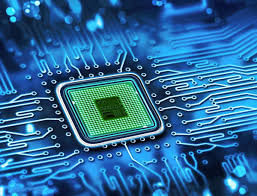
Why in News?
The Indian government, having nearly exhausted the $10 billion subsidy under its ambitious semiconductor manufacturing incentive policy, is planning a second phase with a $15 billion outlay. This expansion aims to provide capital support for raw materials and gases used in chip manufacturing, while reducing subsidies for assembly and testing plants.
India’s Semiconductor Ambitions:
- Background: Semiconductors are fundamental to modern electronics, forming the backbone of various industries. Countries worldwide are strategizing to reduce dependence on single sources of semiconductor chips, enhancing national security and economic stability, especially in light of recent geopolitical tensions.
- Advantages to India: India possesses 20% of the global semiconductor design workforce, a rapidly advancing technology landscape, and a robust domestic market, which are all favorable for creating a self-sufficient semiconductor ecosystem.
- How to sustain the growing momentum?
- Pacing up of initiatives: Historically, India has made several attempts to establish a foothold in the global semiconductor industry but has often struggled due to slow policy implementation. Learning from past experiences, the government can expedite policy execution under its new strategy.
- Inching up the value chain: To create a comprehensive semiconductor ecosystem, India should strategically navigate through different stages of the industry value chain.
- Leveraging the talent edge: Projections indicate that India will need 1.2 million skilled professionals in the semiconductor sector by 2032. Urgent action is necessary to build the required talent pool.
India's Major Leap into Semiconductor Manufacturing:
- The government aims for India to rank among the top five global semiconductor manufacturing destinations by 2030, similar to the United States, Taiwan, and South Korea.
- Initiatives like the National Electronics Policy and the USD 10 billion production-linked incentive (PLI) scheme are driving India's efforts in chip manufacturing.
- India is actively attracting foreign investments to establish operations, including a significant $11 billion fabrication plant by Tata Electronics in collaboration with Taiwan's Powerchip.
- Additionally, three chip assembly plants are being set up by Tata, US-based Micron Technology, and Murugappa Group’s CG Power in partnership with Japan's Renesas.
- With the right combination of proactive initiatives, technological expertise, infrastructure development, and financial investment, India is well-positioned to achieve its semiconductor goals.
The Semiconductor Manufacturing Incentive Policy:
- In the initial phase of the incentive policy launched in 2021, the government offered a 30% capital expenditure subsidy for chip packaging and testing facilities. This subsidy was raised to 50% in 2022.
- The Semiconductor Manufacturing Incentive Policy 2.0 will emphasize:
- Focus on chip fabrication: India seeks to advance beyond merely assembly and packaging, aiming to enhance its capabilities in semiconductor fabrication, where countries like Malaysia have established strong positions.
- Technology transfer costs: The new policy will not cover costs associated with technology transfers, meaning companies must bear these expenses themselves when collaborating with other firms for chip fabrication.
- Capital equipment and ecosystem support: The government may provide assistance with capital equipment and essential materials, such as gases and chemicals, necessary for assembly and testing facilities. It may also incentivize the production of micro-LED displays.
GS3/Defence & Security
India's 2nd nuclear missile submarine
Source: Hindustan Times

Why in news?
India has successfully commissioned its second nuclear submarine, INS Arighaat, into the Navy. This addition enhances the country’s nuclear triad, allowing it to launch nuclear missiles from air, land, and sea platforms.
About
- INS Arihant is a 6,000-tonne submarine and serves as the lead ship of India's Arihant class of nuclear-powered ballistic missile submarines, developed under the Advanced Technology Vessel (ATV) project.
- The ATV project, which is top-secret and costs Rs 90,000 crore, aims to produce three additional SSBNs following INS Arihant.
- INS Arighaat is the second submarine in this series to be commissioned.
- Plans are in place to construct two more SSBNs, each weighing 7,000 tonnes, as part of the ATV project.
- There are also proposals to build larger SSBNs weighing 13,500 tonnes, equipped with advanced 190MW reactors.
- INS Arihant, launched in 2009 and commissioned in 2016, stands as India's first indigenous nuclear submarine.
Features
- Power source: The submarine is driven by an 83 MW pressurized light-water reactor using enriched uranium fuel.
- Builder: Constructed by the Shipbuilding Centre (SBC) in Visakhapatnam, it is India's first indigenously developed nuclear submarine.
- Design: Based on the Russian Akula-1 class submarines, its reactor design benefitted from significant Russian collaboration.
- Classification: It is categorized as a Ship Submersible Ballistic Nuclear Submarine (SSBN), capable of submerging deeply and remaining undetectable for long periods while carrying nuclear-tipped ballistic missiles.
Armament
- INS Arighaat can carry ballistic missiles equipped with nuclear warheads.
- Currently, it is armed with K-15 Sagarika missiles that have a range of 750 km.
- In the future, it will also be equipped with K-4 missiles, developed by the DRDO, capable of striking targets up to 3,500 km away.
- The 'K' series of missiles is named in honor of former President APJ Abdul Kalam.
Significance
- Nuclear triad: With the addition of INS Arihant, India has achieved a complete nuclear triad, enabling missile launches from land, air, and sea.
- Importance of the triad: This capability ensures that even if one segment is compromised during an enemy strike, another can retaliate, thus providing a credible second-strike capability.
- Stealth capability: Unlike missile sites and airbases which are vulnerable to satellite surveillance, SSBNs like INS Arighaat can operate undetected beneath the ocean for extended periods.
- Elite club membership: India joins a select group of countries—US, Russia, France, UK, and China—that can design and operate strategic strike nuclear submarines.
- Credible minimum deterrence: While adhering to a policy of credible minimum deterrence and no first use, the successful deployment of INS Arihant serves as a strong counter to nuclear threats.
- Maritime security: INS Arihant enhances India's maritime capabilities in the Indian Ocean, particularly against challenges posed by Chinese submarines.
- Boost to defense manufacturing: The development of the Arihant is a testament to the government's Make in India initiative.
India’s commissioning of INS Arighaat significantly enhances its deterrence capabilities.
- The discreet ceremony in Visakhapatnam was attended by Defence Minister Rajnath Singh.
- Like its predecessor, INS Arihant, this 6,000-tonne nuclear submarine is armed with K-15 missiles made in India, which have a range exceeding 700 km.
- Both submarines, powered by 83 MW pressurized light-water reactors, can remain submerged longer than conventional submarines.
- The presence of both INS Arihant and INS Arighaat will fortify India's ability to deter potential threats and protect its national interests.
GS2/Governance
RESET Programme
Source: News 18
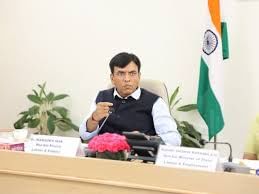
Why in News?
Recently, the Union Minister of Youth Affairs & Sports and Labour & Employment launched the “Retired Sportsperson Empowerment Training” (RESET) Programme on the occasion of National Sports Day in New Delhi.
About RESET Programme:
- The Retired Sportsperson Empowerment Training Programme aims to uplift retired athletes who have represented the country and achieved significant success.
- It focuses on assisting retired sports persons in their professional development by providing them with essential knowledge and skills, thereby increasing their employability.
- This initiative marks a crucial move towards acknowledging and leveraging the invaluable experience and expertise of former athletes.
- Eligibility:
- Athletes who have concluded their active sports careers and are between the ages of 20 to 50 years are eligible.
- Eligible candidates must have won medals in international competitions, participated in international events, or achieved accolades as national or state medallists in competitions recognized by various sports authorities.
- The programme will cater to two educational levels: those who have completed Class 12 and above, and those with qualifications of Class 11 and below.
- Implementation:
- For the initial phase, the Lakshmibai National Institute of Physical Education (LNIPE) will spearhead the implementation of the RESET Programme.
- The courses will be delivered in a hybrid format, combining self-paced online learning through a dedicated portal with practical, on-ground training and internships.
- Internship opportunities will be available in various sports organizations, competitions, training camps, and leagues.
- Upon successful completion of the courses, participants will receive assistance with job placements and guidance for entrepreneurial endeavors.
|
39 videos|4566 docs|979 tests
|
FAQs on UPSC Daily Current Affairs: 30 August 2024 - Current Affairs & Hindu Analysis: Daily, Weekly & Monthly
| 1. What is the significance of the land-based deep depression causing extreme floods in Gujarat? |  |
| 2. What are the key facts about Sabina Shoal? |  |
| 3. How does the Unified Payments Interface (UPI) block mechanism work? |  |
| 4. What is the controversy over lateral entry into the Civil Services? |  |
| 5. What intriguing magnetic behavior has been revealed on Mars according to the study mentioned? |  |

































